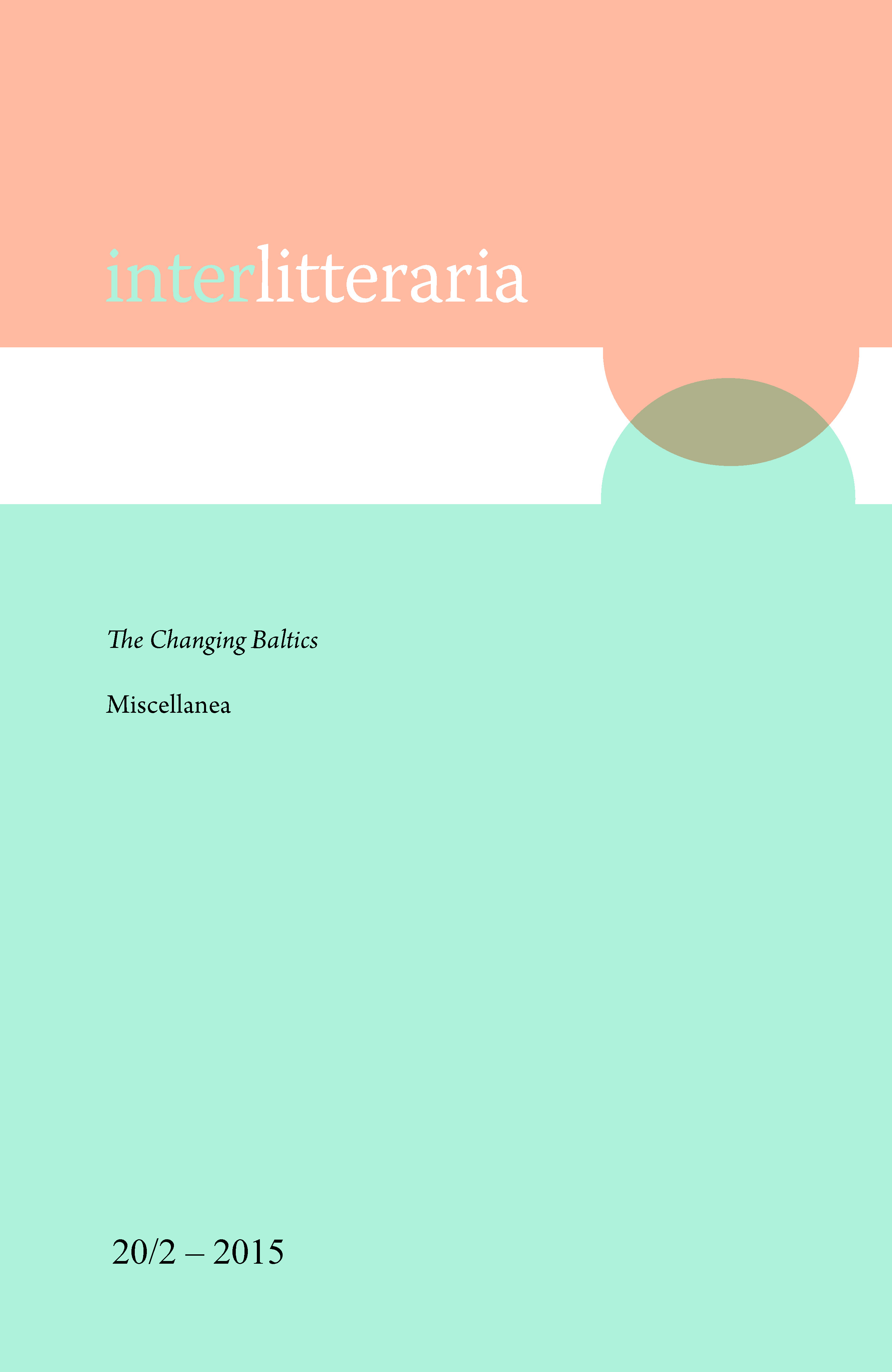Functional Cinematic Elements in Works of Alberts Bels: Allusions, Themes and Clichés
DOI:
https://doi.org/10.12697/IL.2015.20.2.4Keywords:
cinematic elements, functional, allusions, clichés, ironyAbstract
Alberts Bels is a Latvian author whose literary works contain the most notable cinematic elements in Latvian literature. He is also one of those authors who uses a lot of functional cinematic elements alongside with structural ones. Both of these cinematic elements frame the intertextual depth of a text and also make characters dynamic, understandable and ironically toned for a reader.Downloads
Download data is not yet available.
References
<p>Bels, A. 1966. Spēks ūsās. – <em>Spēles ar nažiem</em>. Rīga: Liesma, 76–85.</p><p>Bels, A. 1968. “Es pats” līdzenumā. – <em>“Es pats” līdzenumā</em>. Rīga: Liesma, 5–9.</p><p>Bels, A. 1968. Ermoņiku Žanis. – <em>“Es pats” līdzenumā</em>. Rīga: Liesma, 211–220.</p><p>Bels, A. 1973. <em>Saucēja balss. </em>Rīga: Liesma.</p><p>Bels, A. 1977. <em>Poligons. </em>Rīga: Liesma.</p><p>Benjamin, W. 1968. <em>The Work of Art In The Age of Mechanical Reproduction. – </em><em>W.</em><em> Benjamin, Illuminations. </em>New York: Houghton Mifflin Harcourt, 217–252.</p><p>Brēmere, I. 2013. <em>The Verbal Representation of Fine Art Objects in the Latvian Poetry of </em><em>Early </em><em>20</em><em>th</em><em> </em><em>Century</em>. [Dissertation.] Riga: Latvian University.</p><p>Gibson, M. C. 2001. <em>Cinematic</em><em> </em><em>Techniques in the Prose Fiction of Beatriz Guido</em>. Boston: Boston University.</p><p>Mart’janova, I. 2001. <em>Kinovek</em><em> </em><em>russkogo</em><em> </em><em>teksta:</em><em> </em><em>paradoks</em><em> </em><em>literaturnoj</em><em> </em><em>kinematografičnosti</em>. Sankt-Peterburg: SAGA. = Мартьянова, И. 2001. <em>Киновек русского текста: парадокс литературной кинематографичности</em>. Санкт-Петербург: САГА.</p><p>Nettelbeck, C. 2006. Modiano’s Stylo: Novelist in the Age of Cinema. – <em>French Cultural Studies</em>, Vol. 17, No. 1, 35–54. <a href="http://dx.doi.org/10.1177/0957155806060794" target="_blank">http://dx.doi.org/10.1177/0957155806060794</a></p><p>Seed, D. 1984. Media and Newsreels in Dos Passos’ <em>U.S.A. </em><em>– The Journal of Narrative Technique</em>, Vol. 14, No. 3, 182–192.</p><p>Seigneuret, J.-C. 1988. Cinema. – J.-C. Seigneuret, <em>Dictionary of Literary Themes and Motifs</em>, <em>A–J</em>. New York: Greenwood Press, 248–257.</p>Wyllie, B. 2003. <em>Nabokov at the Movies: Film Perspectives in Fiction. </em>Jefferson,. N.C.: McFarland.
Downloads
Published
2015-12-31
Issue
Section
Articles
License
The contents of Interlitteraria are published under CC BY-NC-ND licence.


